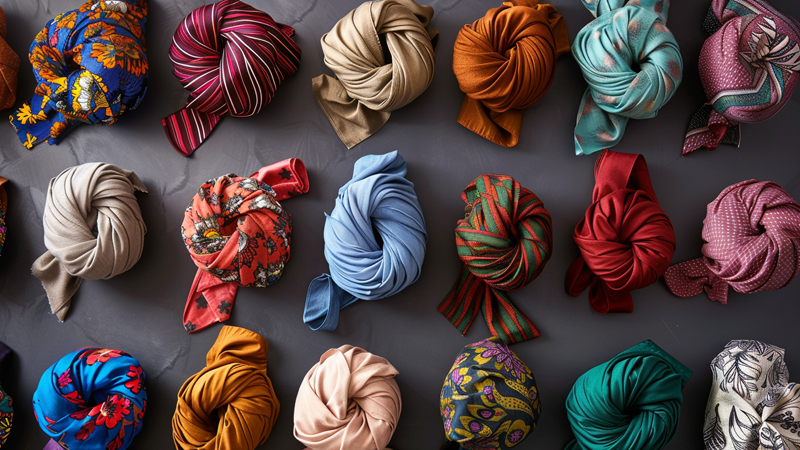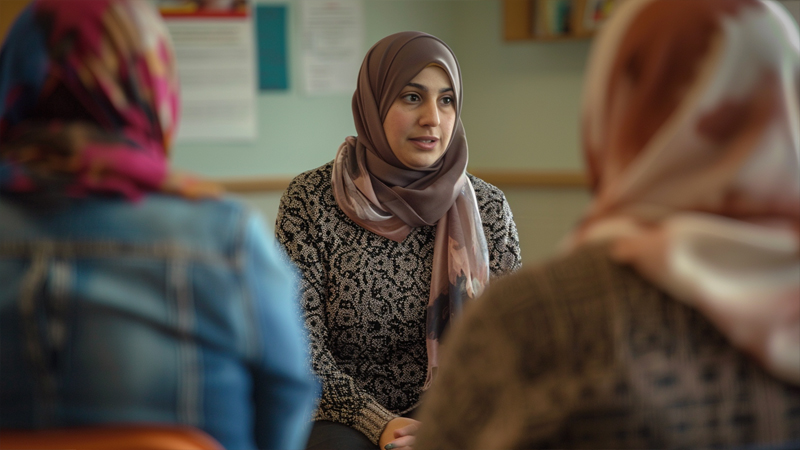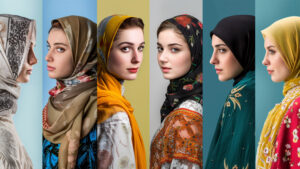
Words can shape how we see each other. I’ve learned the hard way that even small shifts in language hold huge meaning.
Using “scarf” instead of “hijab” can be hurtful when it overlooks the deep cultural and religious significance of the hijab. Honoring correct terminology fosters respect and understanding.
I want to show why this matters.
How does terminology affect cultural sensitivity regarding hijabs?
I’ve noticed that calling a hijab a scarf may seem harmless, but words carry weight.
Choosing accurate terminology shows sensitivity to religious practices, protects personal identity, and nurtures mutual respect.

I remember chatting with a friend who wore a hijab, and I casually said, “That’s a pretty scarf!” She paused, then gently explained why the term “hijab” felt more respectful. She told me her hijab isn’t just fabric—it's a commitment to her faith1, an expression of who she is, and a source of pride. From that moment, I realized that a simple word swap could either build or break bridges.
Unpacking the Power of Words
- Identity and Faith: A hijab represents more than fashion. It can symbolize modesty, religious practice, or cultural ties. Mixing it up with a generic term might ignore this core meaning.
- Respect and Sensitivity: When we use the right terminology, we show that we see and value someone’s beliefs. It’s similar to calling a friend by their chosen name instead of a nickname they dislike.
- Building Trust: I’ve found that thoughtful language invites open conversations. If I say “hijab,” it feels like an invitation to learn more, instead of dismissing an important part of someone’s identity.
In our everyday conversations, it’s so easy to say “nice scarf!” because we don’t always realize the depth behind a hijab. But taking a moment to use “hijab” can be a sign of mindfulness and consideration. That minor adjustment in vocabulary can go a long way toward fostering connection and understanding across cultures.
What terms are preferred within the Muslim community when referring to hijabs?
It surprises me how often people default to general terms, missing the deeper context.
Words like “hijab,” “khimar,” or “headscarf” are often more appropriate and appreciated by many within the Muslim community.

I once asked my friend’s mother about which words felt most respectful. She explained that “hijab” typically refers to the head covering worn by some Muslim women, while “khimar2” can mean a type of longer veil. Both terms acknowledge religious practice and help maintain dignity and modesty.
Understanding Different Terms
- Hijab: Often used to describe a headscarf3 that frames the face and covers the hair and neck area.
- Khimar: A longer, cape-like covering that drapes over the upper body, sometimes to the waist.
- Headscarf: A broader term that can still be suitable, though it doesn’t always capture the spiritual dimension of the hijab.
I’ve noticed that when people use words like “hijab,” they tend to ask more questions—like why it matters and how it’s worn. This leads to better conversations. On the other hand, broadly calling it a “scarf” might stop us from exploring the real, meaningful reasons behind it. Choosing precise language can signal genuine interest, which makes it easier for friends, classmates, or coworkers to share their stories. And that’s where true understanding begins.
How can misnaming hijabs impact perceptions and respect?
It might look like a tiny mistake, but small word choices can carry big consequences.
Calling a hijab a simple “scarf” can reduce its religious significance, leading to misunderstandings and strained interactions.

I recall a time when a coworker kept referring to a Muslim colleague’s hijab4 as a “fashion scarf.” Although they meant well, it created confusion. My colleague felt as if her beliefs were being treated like a passing style trend, rather than a profound personal choice. That tension lingered until someone explained why correct terminology5 matters.
Why It Matters
- Respect and Dignity: Recognizing a hijab as a religious and cultural practice helps preserve dignity. People want their faith and choices to be acknowledged.
- Social Inclusion: Misnaming a hijab can unintentionally exclude or isolate someone who is practicing their faith. When we call it by its rightful name, we make space for belonging.
- Shared Understanding: Using accurate terms sparks deeper conversations. People open up about their experiences, and we learn more about their world.
Here’s a quick reference:
| Misnaming | Potential Impact |
|---|---|
| “Scarf” | Minimizes or overlooks spiritual meaning |
| “Head thingy” | Shows a lack of awareness or empathy |
| “Fashion accessory” | Undermines the religious or cultural importance of the hijab |
I’ve found that people are rarely offended by honest mistakes if they see genuine effort to learn. However, repeatedly ignoring someone’s preference can harm trust. By calling a hijab by its proper name, we let the wearer know we see the deeper significance, not just the fabric.
How can you educate others on the importance of using respectful language for hijabs?
I believe simple, kind efforts go a long way in teaching empathy.
Open conversations, share personal stories, and encourage learning about the meaning behind the hijab.

I’ve had the best results when I’ve approached this topic with genuine curiosity. For example, I once invited a friend to explain her journey with the hijab to my extended family. She spoke about her beliefs, her childhood experiences, and the pride she felt wearing it. My relatives, who had previously never encountered the term “hijab” in depth, learned that it wasn’t just a “scarf” but a reflection of her devotion.
Ways to Spread Awareness
- Lead by Example: I try to use the correct term whenever I see a hijab, and then others around me often follow suit without me having to say anything.
- Ask Open-Ended Questions: If I’m unsure, I politely ask, “Is it okay if I call it a hijab?” This shows respect and helps clarify the person’s preference.
- Provide Resources: Occasionally, I share short articles or videos that explain the hijab’s significance. This can be a gentle way to open someone’s eyes to its deeper meaning.
- Storytelling: Encouraging personal stories6 allows people to see that a hijab is more than fabric. It’s part of a person’s identity, with memories and values woven into every thread.
I love how a little awareness can spark big changes. When we choose respectful language7, we create an environment that’s more curious than judgmental. People start learning from each other, opening the door to real friendships and respect. And honestly, that’s the kind of world I want to live in—one where understanding thrives on empathy and kind words.
Conclusion
Words shape empathy. Embracing “hijab” with respect can deepen shared understanding and genuine human connection.
-
Understanding how hijab symbolizes faith commitment can enhance your appreciation for diverse beliefs and practices. ↩
-
Learning about the khimar will enhance your knowledge of different types of modest attire in Islamic tradition and their meanings. ↩
-
Discovering the various types of headscarves can provide insights into their diverse cultural significance and usage around the world. ↩
-
Exploring this resource will deepen your understanding of the hijab's cultural and religious importance, fostering respect and awareness. ↩
-
This link will provide insights into the importance of using accurate terms in cultural contexts, enhancing your communication skills. ↩
-
Personal stories provide unique insights that can bridge gaps in understanding and promote empathy among diverse groups. ↩
-
Understanding the impact of respectful language can enhance your interactions and foster a more inclusive environment. ↩




